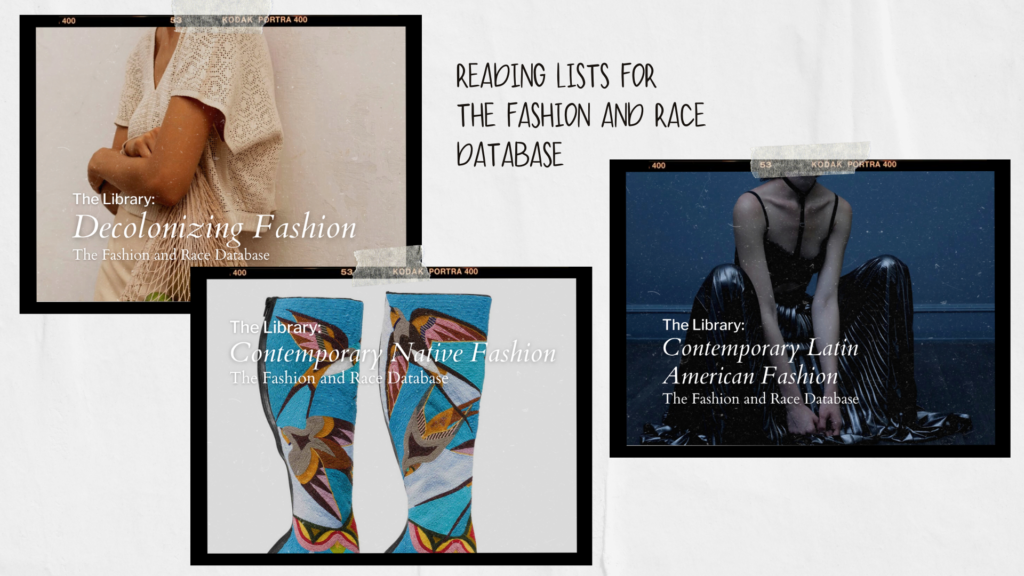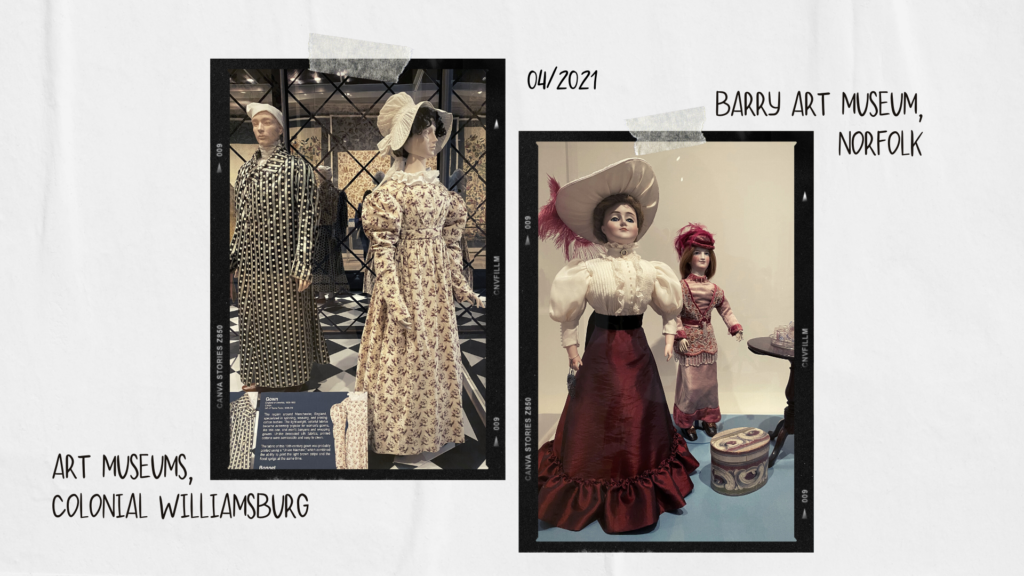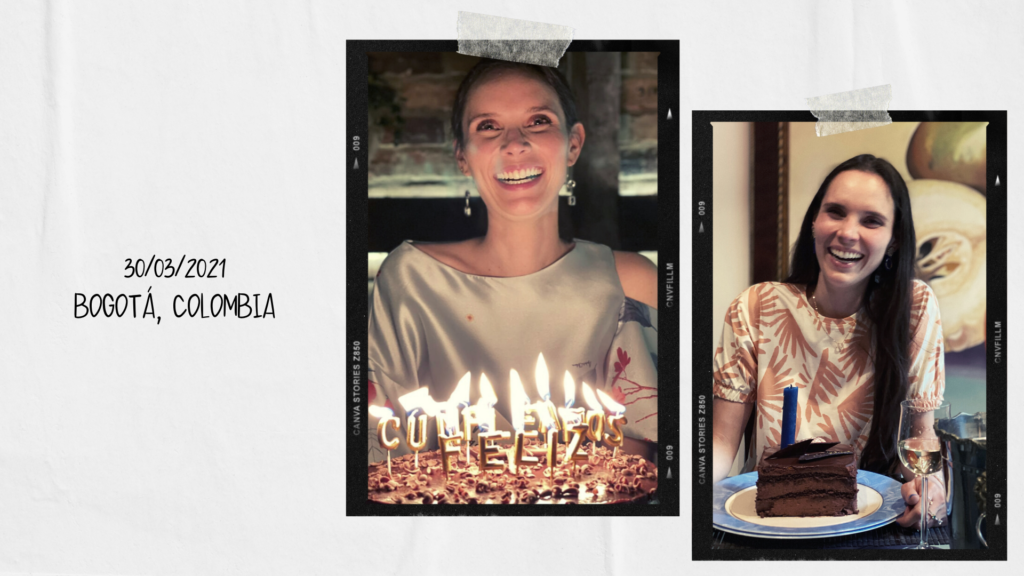The last few months have been a whirlwind! I can’t believe that it’s been over three months since I last wrote for this blog—and at the same time it doesn’t quite surprise me. If there’s one thing I’ve learnt in the past three years as a Ph.D. Student it’s that it is easy to get overwhelmed (and overbooked!) with everything that we need to do.
This pandemic year has not been any different. In fact, with the increased screen time and the possibility to attend conferences, lectures, and the like virtually anywhere, I’ve found myself much more overcommitted (and overwhelmed) than ever.
But this new mode of doing things has also had a good share of silver linings.
For me, these include being able to connect with more and more people with shared interests in fashion and its history and theory, especially in the Latin American context. I’ve also had the fantastic opportunity to collaborate with colleagues from around the world in different projects and to engage in a number of insightful conversations. One of my Instagram followers reminded me last week of the beautiful conversation I had with my dear friend Isabella Rosner about my research for her podcast Sew What? last year. Last week I also recorded a new interview for another podcast that I love—but I can’t share any of the details just yet. And I’m still in awe with the wonderful, collegial atmosphere at the events hosted by the Sartorial Society Series and the Association of Dress Historians—both of them virtual—that I got to be a part of.
The virtual world that the pandemic forced us to adopt has also given me the opportunity and privilege to become a researcher at The Fashion and Race Database—a project that I’ve admired since I found out about it back in 2017. I can’t put into words how proud I am to be a part of it. And it is perhaps needless to say that I almost faint when I saw that Kimberly M. Jenkins, founder and principal investigator of the project, described my work as “brilliant” in “bringing complexity and nuance to the library we are building on Latin American history”. My most recent publications for the FRD are an Objects That Matter entry on the sarape and a reading list on “Decolonizing Fashion”. Previous reading lists include “Latin American Fashion Exhibitions” and “Pre-Columbian Mesoamerican Dress”. I recently discovered that the latter was featured on the Research Collective for Decolonizing Fashion’s Instagram. And a reading list I created on Contemporary Native Fashion in February was featured in Elle—another pinch me moment!
Back to Instagram for a moment: I never thought I’d say this but my Instagram is getting out of control. In a really good way. Followers, likes and interactions have been growing like crazy. This seems to be the result of my increased use of reels to share snippets of my knowledge of fashion history and theory—plus a bunch of silly ones to complain about #PhDlife! I must say that I really enjoy creating these reels and having conversations with people from all over on social media. But it can get exhausting, especially because we all know how toxic social media can be. So finding ways to not let social media drain me has been an essential aspect of the last month or so.
With so much going on, the last few months have been a bit of a rollercoaster in terms of emotions and energy levels. At some points, I’ve felt like I finally have a good, steady flow between my work at the FRD, my passion project at Culturas de Moda, my research for my dissertation and other projects, and having a life beyond my jobs and the academic field. But at some other points I’ve felt so overwhelmed that I have trouble even trying to get out of bed in the mornings or getting back to work after lunch.
And this leads me to another huge lesson from grad school: when you have too many things on your plate, it becomes easy to burn out just after you’ve found an easy flowing rhythm. But (!) I am convinced that you can work to keep the balance, maintain a good rhythm, and retain—perhaps even grow—all of that creative energy. It just takes *a lot* of work!
That’s exactly what the last months have been about. I’ve been doing some free-writing and journaling here and there to exercise that writing muscle almost every day. I have also been trying to get back to my daily practices of yoga asana and meditation, which I lost since mid-March, when I was hit by an episode of vertigo. Vertigo always hits me when my stress goes out of control, so this was basically my body screaming at me to slow down and take better care of myself.
This month, in particular, slowing down and caring for myself meant trying to take all of the weekend off to do fun (and pandemic-friendly) things.
April started with the last of my birthday celebrations, which I was fortunate enough to share with my family and some of my closest friends (even though I couldn’t get to plan the dance party that I would have liked to host). I also got to spend a lot of time around horses and show at a couple of national showjumping competitions, which is one of my favorite things to do in the entire world! Back in the States, I visited the Chrysler Museum of Art and the Barry Art Museum in Norfolk with one of the best people that this Ph.D. has given me. I also went back to see the exhibition on Textile Arts of Britain at the Art Museums of Colonial Williamsburg again.
Finally (and unsurprisingly for a scholar and graduate student), I spent a good part of these months reading. Lately, I’ve also become a more avid podcast listener and YouTube video watcher. I’m always impressed by the quality of knowledge that is shared through these audiovisual media. Two topics were of particular interest this month, as I thought about my various research projects: the relationship between the body and fashion (with a particular focus on corsetry and “underwear”) and decolonial theory. These are some of the most interesting things I read, watched, and listened to (including some in Spanish, Portuguese, and French) during the past few months:
1. Last week was #FashionRevolutionWeek and I read more than three times Amie Berghan’s writing on why the real revolution should be the decolonization of the fashion industry:
You want a revolution you say? The most revolutionary act we can participate in as fashion lovers, designers, and brands is the long-overdue decolonization of the Fashion industry.
— Amie Berghan
2. Speaking of decolonizing fashion, Dayana Molina recently posted on Instagram a call to reject Eurocentrism and look inwards—and specifically at American Indigenous cultures and creatives. She also reminded us of the work of the Indígenas Moda Collective and Aldeia Criativa do Futuro, which promotes decolonial and sustainable fashion education for Indigenous peoples.
3. Perhaps unsurprisingly, I’ve spent a lot of time with the special issue of Fashion Theory on “Fashion and Decoloniality,” edited by Toby Slade and M. Angela Janssen and published in 2020. You might need library access to download the full issue, but the letter from the editors is available open access.
4. In “Diversité dans la mode : le temps d’avance de l’Amérique Latine,” Alexandra Pizzuto analyzes whether the apparent diversity in Latin American fashion is an optical illusion or an exciting reality. This was sent to me by Bárbara Estreal, from Museo de Moda, whose work I also sincerely recommend.
5. You already know that I absolutely love the podcast Sew What? I’m a little behind but I just listened to a fantastic interview with superstar curators Melinda Watt and Amelia Peck a couple of days ago! And I’m super excited about an upcoming roadtrip to DC this weekend, hoping that I’ll get to (finally!) listen to the interview with Bisa Butler and Dr. Erica Warren.
6. Is binge-watching a YouTube channel a thing? Cause I’ve been obsessed with Khadija Mbowe‘s and can’t stop looking at her videos!
7. These are probably nothing new to avid fashion readers out there, but I revisited Valerie Steele’s The Corset: A Cultural History this month and finally got my hands (and eyes!) on Barbara Burman and Ariane Fennetaux’s The Pocket: A Hidden History of Women’s Lives, 1660–1900.
8. I also revisited Kathleen M. Brown’s Foul Bodies: Cleanliness in Early America and Rebecca Earle’s The Body of the Conquistador: Food, Race and the Colonial Experience in Spanish America, 1492–1700.
9. I recently watched this interview with Coco Fusco as part of my meandering about decoloniality. One of my favorite works by her was her collaboration with Guillermo Gómez-Peña, “The Couple in the Cage.” I had a fantastic conversation about this piece with a group of students at Universidad de los Andes (in Bogotá) at the beginning of the semester, and haven’t been able to stop thinking about it since!
10. And finally, today I’ll be watching The Museum at FIT’s 24th annual symposium, “Ravishing: The Rose in Fashion” on YouTube. Join in if you can!
Thank you, as always, for tuning in! What are your recommendations from this month?



